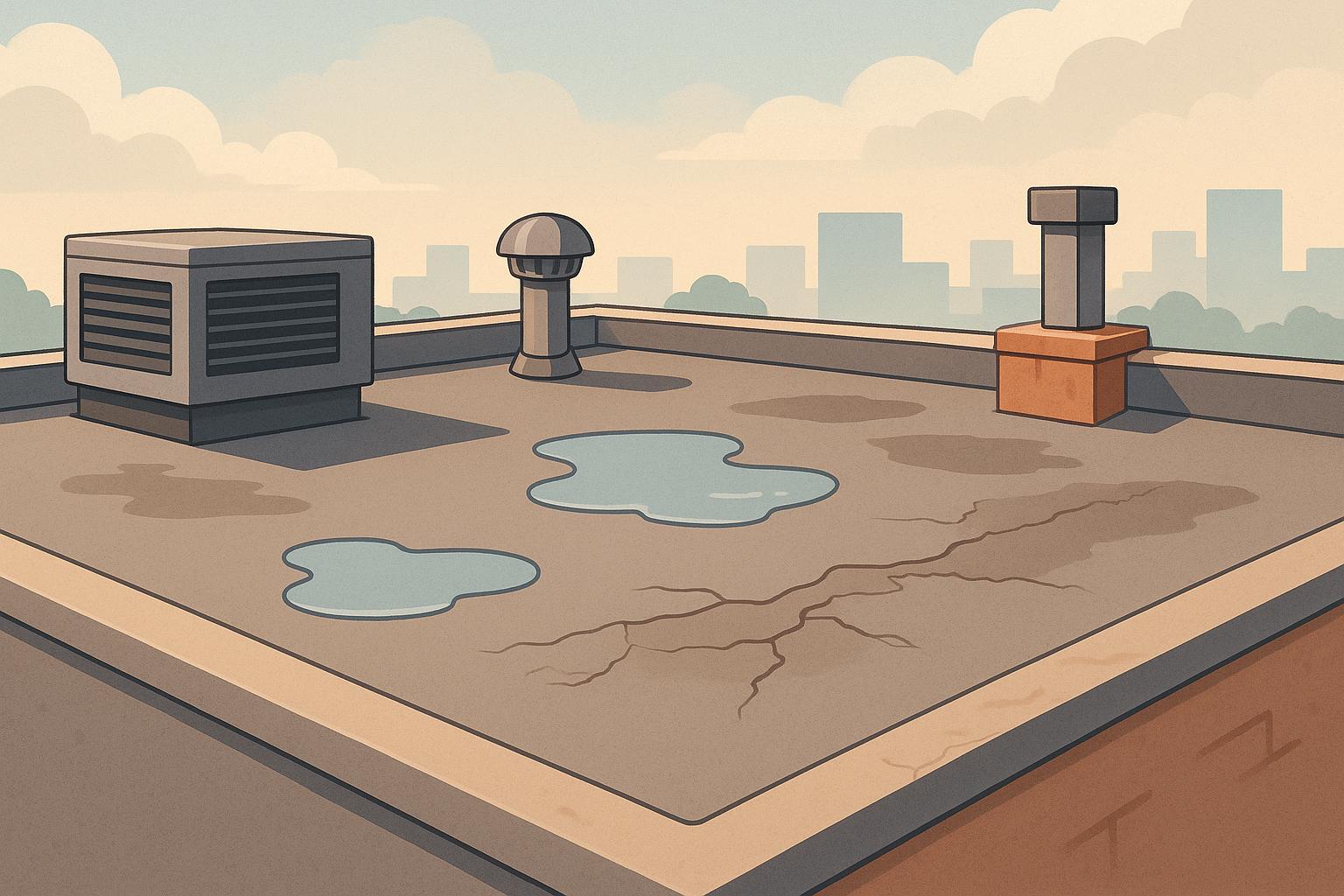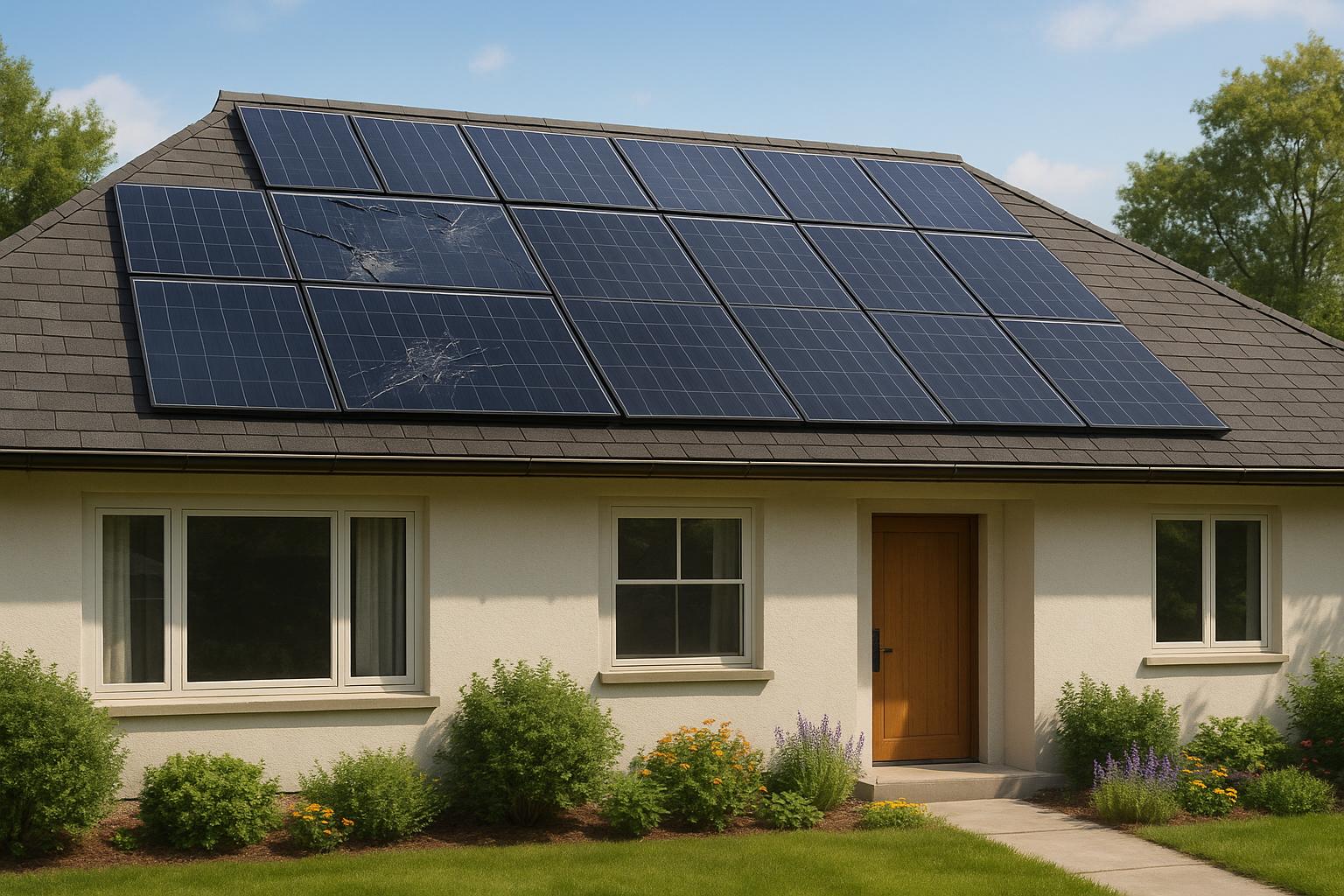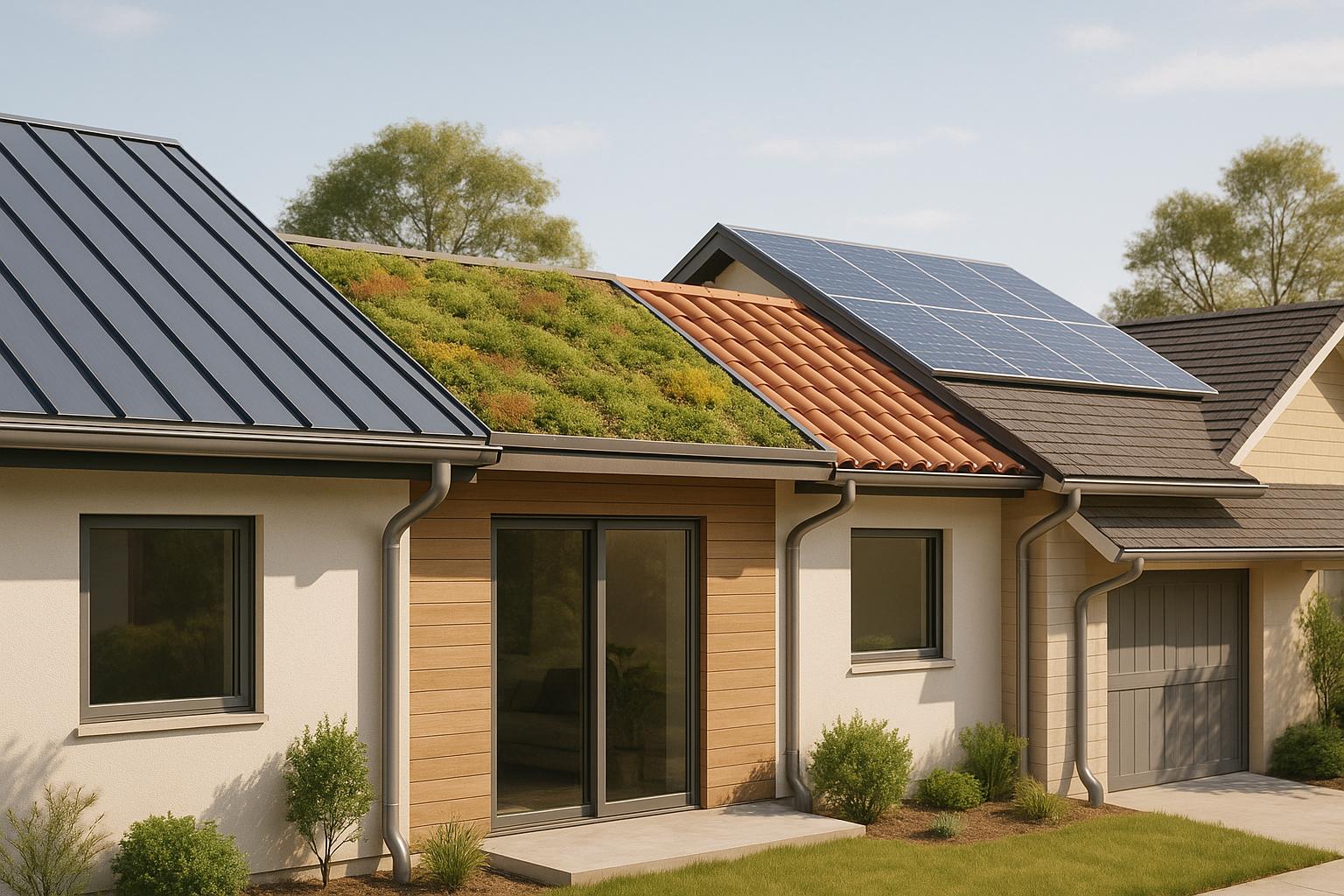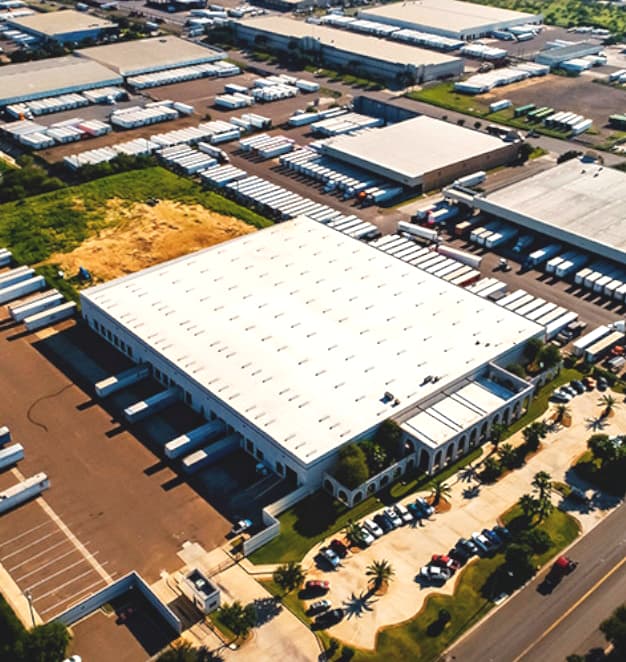Commercial roof leaks can lead to costly damage if ignored. Here’s how to spot them early and prevent bigger issues:
- Water Stains: Look for brown or yellow rings on ceilings and walls.
- Dripping or Pooling Water: Check for leaks near ceiling fixtures, puddles after rain, or sagging roof areas.
- Bubbles and Blisters: Inspect for trapped moisture causing surface defects.
- Damaged Flashing: Missing or loose flashing around roof joints and penetrations can allow water inside.
- Mold and Moisture: Watch for musty smells or dark patches on walls and ceilings.
- Clogged Drains: Standing water or overflowing gutters signal drainage issues.
- Post-Storm Damage: Always inspect for leaks or structural issues after severe weather.
Quick Tip: Schedule annual professional roof inspections to catch problems before they escalate. Addressing leaks promptly saves money and extends your roof’s lifespan.
🏢🛠️ Spot the Signs: Know When Your Commercial Roof …
1. Water Stains on Ceilings and Walls
Water stains on ceilings and walls often signal a roof leak. These stains usually appear as brown or yellow rings that grow over time, showing where water has seeped in.
Pay Attention to Stain Location: Water doesn’t always drip straight down. It can travel along beams or other structures, meaning the stain might not be directly under the leak. Often, these stains suggest issues with roof flashing or other parts of the roof that need attention.
Why Quick Action Is Important:
- Damage to insulation, which can lead to higher energy bills
- Weakening of structural materials
- Mold and mildew growth, which can affect indoor air quality and health
2. Water Drips and Standing Water
Water dripping from ceilings or pooling on the roof often points to a leak. Pay close attention during rain or snowmelt to spot these problem areas.
Signs of Water Intrusion
Water issues often show up as:
- Drips near ceiling fixtures or HVAC vents
- Puddles left behind after rain
- Sagging or sunken roof sections
- Discolored materials
- Plants growing in damp, waterlogged spots
Why Standing Water Is a Problem
Standing water on a roof can lead to several issues:
- Added Weight: Excess water puts stress on the roof’s structure.
- Damage to Materials: Prolonged exposure weakens roof components.
- Membrane Issues: Pooling water can cause roofing membranes to lift, allowing more water to seep in.
Where to Check for Pooling
Focus your inspection on these areas:
- Around HVAC units and roof penetrations
- Natural low points on the roof
- Where different materials meet
- Gutters and other drainage points
Make it a habit to inspect your roof after heavy storms. If you’re in the Los Angeles area, Prime American Roofing offers professional inspections and dependable repair services.
3. Roof Surface Bubbles and Blisters
Bubbles and blisters on a roof signal trapped moisture, which can eventually lead to leaks. These defects can range from small spots to larger areas where moisture has built up under the surface.
Common Causes of Bubbles and Blisters
- Water entering through surface cracks
- Improper installation trapping air
- Expansion and contraction from temperature shifts
- Poor ventilation leading to condensation
These issues don’t just create visible flaws – they gradually weaken the roof’s overall structure.
Why You Should Pay Attention
Bubbles and blisters can compromise your roof in several ways:
- They create weak spots that are more likely to puncture.
- Water can spread beneath the roof’s surface, worsening the problem.
- Insulation performance may decrease over time.
How to Inspect for These Issues
To catch these problems early, focus on these key areas during your inspection:
- Check around roof penetrations and equipment mounts.
- Look at seams and overlapping materials.
- Revisit previously repaired sections.
- Pay close attention to high-traffic areas.
For commercial properties in Los Angeles, Prime American Roofing offers expert inspections using advanced tools to detect hidden moisture and evaluate blistering without damaging the roof.
Signs the Problem Is Getting Worse
Be on the lookout for these red flags:
- Blisters that feel soft when pressed
- Bubbles that are growing larger
- Cracks forming along blister edges
- Clusters of multiple blisters in one area
These surface issues often signal the start of more severe leaks. Keep an eye out for additional warning signs, which we’ll cover in the next section.
4. Loose or Missing Flashing
Roof flashing plays a critical role in keeping water out at joints and penetrations. If it’s damaged or missing, water can find its way inside. Pay close attention to key flashing areas during inspections to catch potential problems early.
Key Areas to Inspect for Flashing Problems
- Roof-to-wall connections
- Around equipment curbs
- Pipe penetrations
- Expansion joints
- Parapet walls
Signs Your Flashing May Be Failing
- Gaps between flashing and adjoining surfaces
- Rust or corrosion on metal parts
- Warped or bent sections
- Missing pieces or visible fasteners
- Water stains on interior walls
How Weather Affects Flashing
Southern California’s weather can take a toll on flashing. Here’s how:
- UV rays: Break down materials over time
- Temperature changes: Cause expansion and contraction, leading to wear
- Strong winds: Can loosen or displace components
- Seasonal rains: Test the roof’s weak points
These conditions highlight the importance of regular inspections to prevent damage from worsening.
What Professionals Look For
When inspecting flashing, professionals focus on several critical areas:
1. Sealant condition
They check for cracking, separation, or signs of wear.
2. Attachment points
Loose or missing fasteners are a common issue.
3. Counter flashing
Proper overlap and secure mounting are essential.
4. Corners and joints
These areas need proper installation and weatherproofing to hold up against the elements.
At Prime American Roofing, inspection teams use specialized moisture detection tools to uncover hidden leaks around flashing. This proactive approach can prevent small issues from turning into costly repairs.
Red Flags to Watch For
Keep an eye out for these early warning signs of flashing trouble:
- Water stains on interior walls
- Damp insulation near penetrations
- Whistling or unusual sounds during windy days
- Visible gaps or daylight coming through openings
- Persistent dampness around roof penetrations
Damaged flashing can lead to water stains, mold, and other interior problems. Regular maintenance and inspections can help you address minor issues before they turn into major repairs.
sbb-itb-d1d6490
5. Mold and Moisture Damage
Mold and moisture can weaken a building’s structure and pose health risks to its occupants. Catching these problems early can save you from expensive repairs down the line.
Signs of Mold and Moisture Problems
Keep an eye out for these warning signs:
- Dark or discolored patches on walls, ceilings, or floors
- Persistent musty smells, which often point to moisture issues
Address these signs quickly to minimize damage and prevent the problem from spreading.
How to Handle It
Act fast if you notice any signs of mold or moisture. Arrange for a professional inspection as soon as possible to identify and resolve the issue.
If you’re in Southern California, reach out to Prime American Roofing for expert inspections and repairs.
6. Clogged or Broken Drains
Problems with your roof’s drainage system can lead to more than just visible leaks – they often signal deeper issues. When drains are blocked or damaged, water can’t flow off the roof as it should, leading to potential structural problems.
Signs Your Drainage System Might Be Failing
- Standing Water: If water pools in certain areas of your roof, clogged drains are likely the culprit. This pooling adds extra weight to your roof, putting stress on the structure.
- Overflowing Gutters: Gutters spilling over during rainfall are a clear sign of blockages. This overflow can harm your building’s exterior and even its foundation.
How to Prevent Drainage Problems
Make it a habit to schedule professional roof inspections and maintenance at least once a year. This ensures your drains stay clear and functional.
Why Proper Drainage Matters
Inadequate drainage leads to water buildup, which can cause:
- Material Damage: Water stretches and weakens the roof membrane over time.
- Structural Problems: Prolonged exposure to moisture can compromise the roof’s support system.
- Faster Deterioration: Constant moisture speeds up the aging of roofing materials.
For property owners in Southern California, Prime American Roofing provides drain maintenance services designed to prevent these issues. Taking care of drainage problems early can help extend your roof’s lifespan and avoid bigger repair costs down the road.
7. Post-Storm Leak Signs
Severe weather can leave commercial roofs with hidden damage. Strong winds and hail can weaken a roof’s structure, making it crucial to get a professional inspection after a major storm.
What to Do Right Away
Schedule a professional roof inspection as soon as possible. Acting quickly can stop small problems from turning into costly repairs. Also, make sure to prioritize safety when arranging inspections.
Stay Safe
Avoid climbing onto the roof yourself after a storm. Let trained professionals handle the inspection and any necessary repairs. If you’re in Southern California, Prime American Roofing provides thorough commercial roof inspections and repair services to help safeguard your property.
Steps to Fix Commercial Roof Leaks
When a commercial roof leak appears, acting quickly is essential to reduce damage and safeguard your property.
Immediate Containment
Start by containing the leak. Use buckets or tarps to catch water and move valuables out of harm’s way. Cover sensitive items with waterproof materials to protect them. While handling containment, make sure to document the damage as it occurs.
Document Everything
Capture detailed records of the damage using photos and videos. Focus on:
- Water stains and how they spread
- Damaged inventory or equipment
- Structural issues caused by the leak
- Date and time stamps for reference
Also, note the weather conditions and timing of each leak for a complete record.
Professional Assessment
Book an inspection with Prime American Roofing to get to the root of the problem. Their team will:
- Pinpoint all leak sources based on visible and hidden signs
- Assess the roof’s structural condition
- Identify concealed damage
- Develop a repair plan tailored to your needs
"Working in a professional and responsible team is essential for delivering high-quality roofing services. Collaboration ensures that each aspect of the project, from initial assessment to final installation, is executed with precision and expertise" – Tony Mirzakhanyan, Head of Prime American Roofing
Repair Implementation
Once the inspection is complete, professionals will create a customized repair plan. The approach will depend on factors such as:
| Factor | Plan Details |
|---|---|
| Leak Severity | Emergency fixes or scheduled repairs |
| Extent of Damage | Small fixes or major restoration |
| Material Needs | Choosing the right roofing materials |
| Timeline | Setting project deadlines and completion goals |
After repairs, consider scheduling ongoing maintenance to protect your investment.
Preventive Measures
To avoid future leaks, establish a routine maintenance plan, including:
- Regular cleaning of drains and gutters
- Quick repairs for minor issues
- Keeping maintenance records up to date
- Inspecting equipment regularly
Addressing leaks promptly not only saves money but also helps maintain the value of your commercial property. Trusting professionals ensures the repairs are done correctly from the start.
Conclusion
Roof leaks in commercial buildings can lead to serious structural issues if not dealt with quickly. Regular inspections, early detection, and timely repairs are key to protecting your property and keeping everyone safe. When handled by professionals, temporary fixes can be turned into lasting solutions.
Routine upkeep and immediate attention to problems help maintain your roof’s condition and prevent small issues from turning into costly repairs. These habits ensure your roof stays reliable and effective over time.
If you’re in Southern California and need commercial roof inspections or repair services, consider contacting Prime American Roofing. Schedule your inspection today.
"Working in a professional and responsible team is essential for delivering high-quality roofing services. Collaboration ensures that each aspect of the project, from initial assessment to final installation, is executed with precision and expertise." – Tony Mirzakhanyan, Head of Prime American Roofing
FAQs
How can I stop commercial roof leaks from damaging my property?
Preventing damage from commercial roof leaks starts with regular maintenance and inspections. Routine checks can help identify early signs of leaks, such as water stains or mold, before they escalate into costly repairs.
Schedule a professional roof inspection at least once a year to ensure your roof remains in top condition. Regular maintenance not only extends the life of your roof but also protects your property from unexpected issues caused by leaks. Investing in proactive care is key to avoiding significant damage and expensive repairs.
What are the best ways to maintain a commercial roof and prevent leaks or damage?
Regular maintenance is key to keeping your commercial roof in good condition and preventing leaks or structural damage. Schedule professional roof inspections at least once a year to identify and address potential issues early. Additionally, ensure gutters and drains are clear of debris, and promptly repair any visible damage, such as cracks or missing materials.
Taking these proactive steps can extend the life of your roof, reduce repair costs, and help maintain the safety and energy efficiency of your building.
Why should you schedule a professional roof inspection after a major storm?
Scheduling a professional roof inspection after severe weather is crucial to identify hidden damage that may not be immediately visible. High winds, heavy rain, or hail can weaken your roof’s structure, loosen materials, or create leaks that could lead to costly repairs if left unaddressed.
A timely inspection ensures your roof remains safe, functional, and energy-efficient, protecting your property and avoiding potential disruptions. Professional assessments can also help with insurance claims by documenting storm-related damage accurately.





